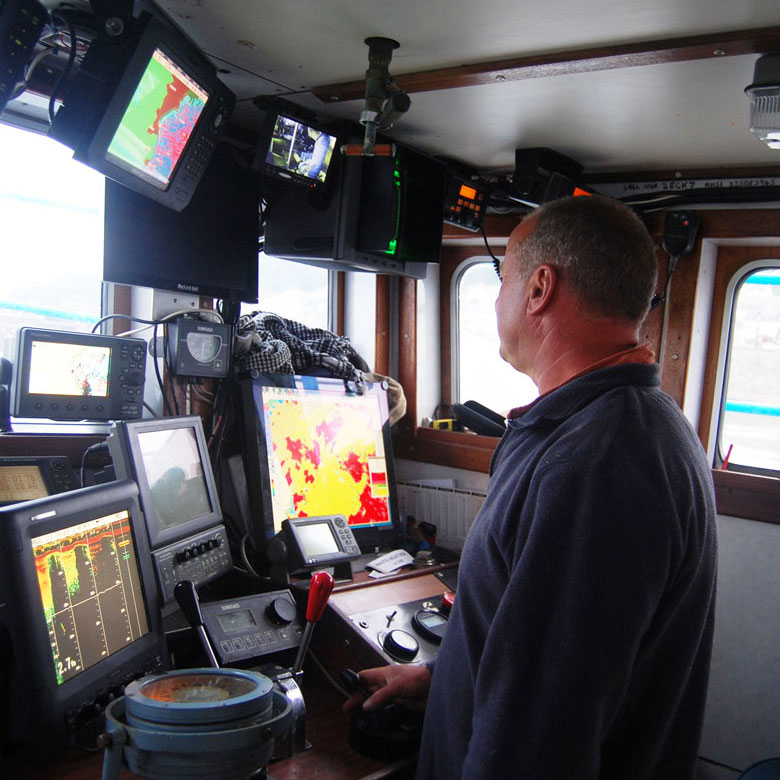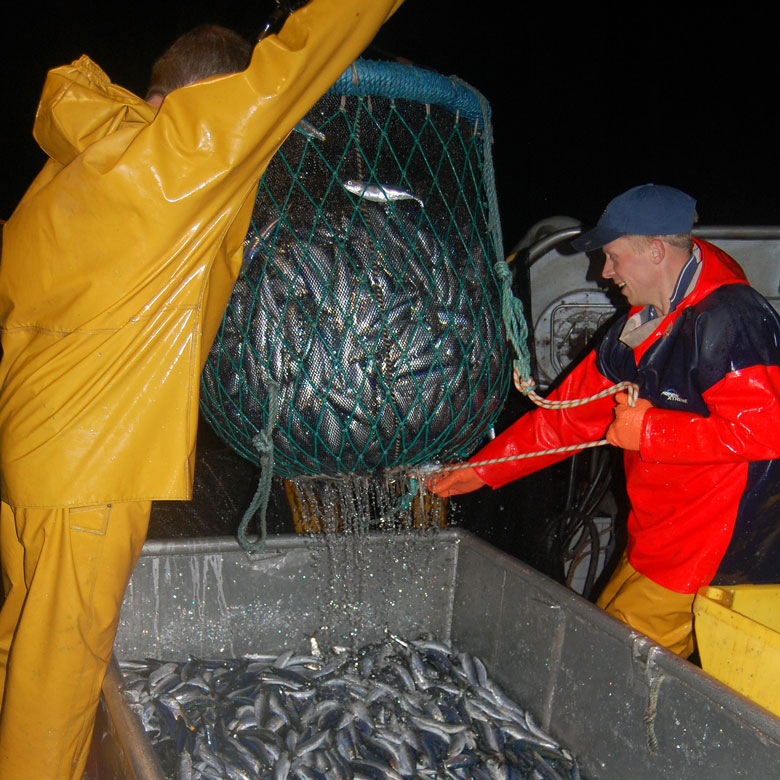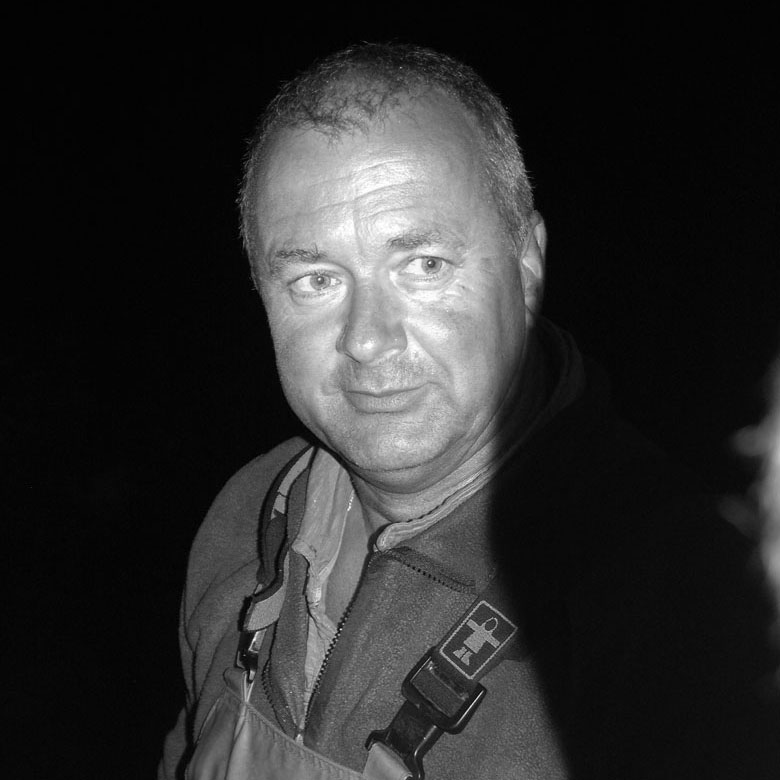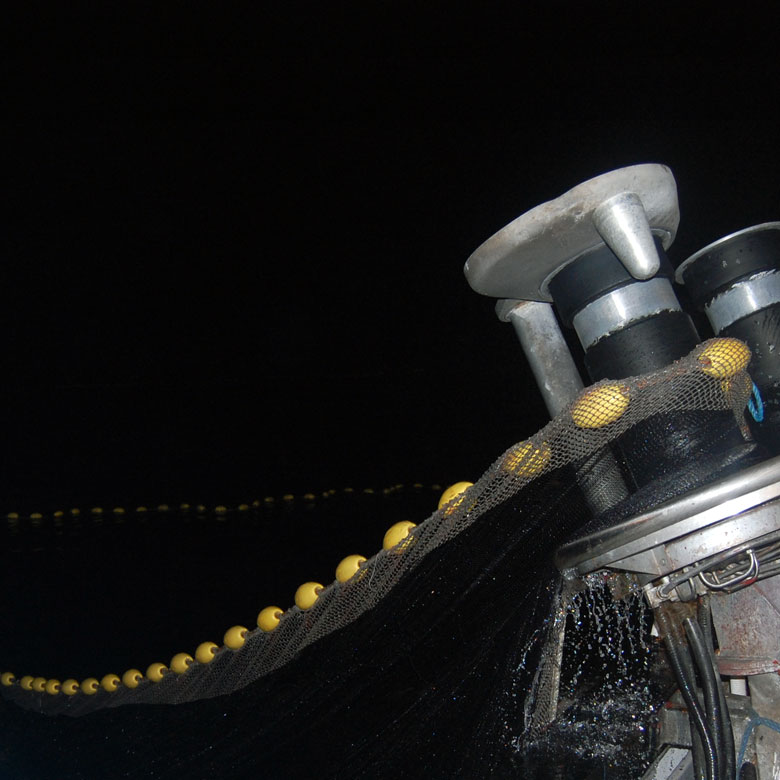The sardine king
Newlyn skipper Stefan Glinski helped pioneer the market for Cornish sardines. He’s an ace at catching them too, as we thrillingly discover first hand one thankfully calm August night.
Stefan Glinski is something of a local legend. Every fisherman in Cornwall seems to know his name and they all say much the samething: he’s a smart guy. Stefan helped pioneer the resurrection of the traditional pilchard catch. It had been all but abandoned by the 1990s, only to be reinvented for the 21st century as Cornish sardines, sold fresh as well as tinned for UK shoppers keen to recapture the taste of Mediterranean holidays.
Stefan spotted both the gap in the market and the vast shoals that had blossomed uncaught just off shore, and he turned his hand to catching them about 10 years ago. And if that proved to be a smart move, the skill with which he catches them is something else.
We see it for ourselves on a thankfully summer’s calm night. Stefan takes us out on the White Heather, his latest boat, a recent, bigger upgrade on its predecessor, the Pride of Cornwall, which was the first custom-built sardine boat in Cornwall for generations.
A 44ft Scottish trawler converted to ring netting sardines at considerable expense, White Heather is a case study in the investment and reinvestment in the industry in recent years. Nothing to do with a modern fishing boat comes cheap: the net alone – a sizable 400m around and 100m deep – cost tens of thousands of pounds.
Stefan calls the wheelhouse “mission control”. There are screens all around the wheel – radar, sonar, echo sounder, plotter – all set up just the way he likes it, the result of years of experience. And it’s experience just as much as those pricy electronics that helps him find his fish. On our trip, it takes him about two hours to spot a shoal. We don’t even notice, but the three-man crew – Smally, Rhys and George – do. The boat slows and without a word, they slip on their gauntlets and go on deck. “We win,” says Stefan quietly.

The shoal is big, showing up red on the echo sounder. Stefan can tell what it is by the shape, and even the size of the fish by its colour. But catching them won’t be easy. The boat’s over shallow water and rocky ground. If the net drags and tears, it could mean days of costly repairs and lost fishing. That reluctance to allow the net to touch the bottom is a major environmental benefit, meaning that even in shallow water the seabed is rarely disturbed.
Stefan shadows the shoal, stalking it, gauging which way it’s going and how it moves, picking his moment. And then he pounces. He shoots the net and guns the engine. The boat surges ahead in a big curve, the net flying over the back like grey smoke in the moonlight. He chucks out flaring bangers that boom beneath the boat, to scare away any dolphins that might be around. The yellow floats arc out behind and the net descends, like a mesh fence. When the ring is complete, the two ends meet and the purse rope running along the bottom of the net starts flying in, drawing it closed, like a cup. It all happens lightning fast, the crew working like a gun team as the net is drawn in beneath the fish, but safely clear of the rocky bottom.
When the fish are trapped, big floodlights go on, and the deck is lit up like a film set. The big hydraulic winch on the back roars into action, drawing the tightening net back into the boat. Stefan looks over the side to check the catch while it’s still in the water: if the fish are undersized or the wrong species, he can release, or “slip” them. The fine mesh of the net is designed to protect the fish, so they can swim away unharmed. But there’s no need tonight. These are big, fat sardines, all right, 15 or 20 tonnes of them, Stefan reckons. Smally, Rhys and George start scooping them from the water in a brailing net, around 250kg a time, so they don’t get damaged, pouring them into the hold in a livid, shimmering stream.
And they’re all sardines. Among maybe 150,000 fish we catch sight of just two mackerel and nothing else, the shoal swimming together too tightly to allow by-catch. The fish go straight into a mix of water and ice, chilling them immediately, and suspending rather than packing them, again so they remain pristine.
Scoop after scoop, they fill all three 6-tonne holds brim full and two 350kg bins and still they come. It’s a slick, modern operation, but there’s a primal thrill here too: this is proper Ernest Hemingway stuff, fishermen in their element. Stefan can be a bit of a curmudgeon in the wheelhouse, but out here on deck he’s beaming, fully alive. It’s not hard to see why fishermen re so passionate about what they do.

On the return journey to port, which takes barely 40 minutes because we’re so close – just 2.2 miles off-shore and 8 miles from Newlyn – Stefan sells most of his catch with a single phone call.
Clearly this is a good night, but it’s not always so straightforward. It can take much longer to find the fish; he might have to slip; he might have to settle for less, or even nothing at all, although that’s rare. It’s not always so calm either, and goodness knows what it must be like in 4m waves, swinging a full brailing net on a heaving deck without a harness.
The sardine season runs from late July to March, and Stefan goes out Sunday to Thursday in all weathers “unless it’s so bad I can’t stand up”, and always at night, when the fish can’t see the boat. Stefan’s success has attracted other local ring netters and the total Cornish sardine catch has surged from only a few tonnes in the 1990s to a little under 2,000 tonnes today. That’s a big jump, but stocks still remain robust and the fishery achieved MSC certification in 2010 as sustainable and well-managed. The third positive surveillance audit was recently published, with the next one due in 2015. As Stefan puts it, with characteristically bluff pride: “You can’t get any greener.”








